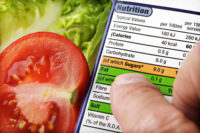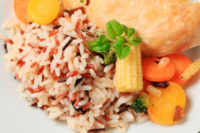Value, Health Take the Lead








Innovative recent launches have included Perdue Whole Grain Chicken Breast Nuggets, which are whole-grain chicken breast nuggets in a plastic pouch containing 4g of fiber. There were also a high number of products featuring a “low fat” (150) or “gluten free” claim (117). As 2011 begins with escalating food prices and continued fears over job security, consumers looking for value or to return to basics will drive new product activity trends.
Gaining value
Contradictory trends have come about as a result of the tough economic environment, with consumers looking to eat out less, yet spoil themselves with something truly special at home. Consumers are looking for value from their food products, which could relate to price or size, but may also mean opting for something of outstanding natural quality at a good price that is “value for money.”
Logically, use of the word “value” has risen dramatically in the last 24 months. Innova Market Insights tracked 1,936 products using the word “value” from October 2009 through September 2010, which was level with the previous 12 months (1,934), but up dramatically from before the downturn (October ’07-September ’08), when 887 products were tracked globally using this word. If consumers believe they are getting value for money, they will be willing to pay for it. It is the crowded center market that needs to be careful, as consumers turn to either budget or value-added premium products.
“Processed is Out” and “Offering Real Value” were Innova Market Insight’s top two trend choices for 2011 (see Table 1). Two of the other top 10 trends had particular relevance for the meat industry; “Culinary Expansion” and “Try a Little Respect.” These two trends, together with the continuing reduction in sodium are key drivers for innovation in the meat space.
Return in skills
As mentioned earlier, the need for austerity in tough economic times has led consumers to eat out less, but in turn spoil themselves with true indulgence at home. One potentially positive result of the downturn is a rising interest in quality home-cooking and improved kitchen skills. There have been rising numbers of repositioned and completely new products designed to cater to the creative home cook.
Nielsen recently noted that U.S. consumers place more attention on at-home meals and in-home entertainment options, as evidenced by more time spent visiting cooking-related Web sites, watching food-related TV programming and reading cookbooks.
Strong sales were noted for celebrity chef-inspired brands on the grocery shelves. Dollar sales for a broad set of selected restaurant and celebrity chef brands are up 12.6%, and unit volume is up 10.6% versus two years ago, with annual sales just shy of $4.75 billion.
The trend towards celebrity chef-branded or -endorsed meals and meal components, has progressed markedly in recent years. Prepared-foods categories seeing particular activity in celebrity-chef endorsement include ready meals, soups, sauces and accompaniments across frozen, chilled and ambient products.
Chef endorsement
Using the endorsement of a chef can add an authentic edge to a product, and Innova Market Insights tracked 322 new products in the U.S. featuring the word “chef,” compared to 232 in 2009. Innovative products introduced last year included Chicken and Vegetable Chinese-style dumplings from Wolfgang Puck. The products are “filled with fresh chicken and vegetables and are beautifully complemented by my garlic chili ponzu dipping sauce.”
Also new is Sanjeev Kapoor’s Khazana Chicken Aachari Spice Mix, a chicken aachari spice mix in a 75g sachet, endorsed by the world-renowned Indian chef. Chicken aachari is a traditional chicken curry dish from India with a twist of pickling spices.
The launch of chef-endorsed protein products has not been limited to the U.S. In Germany, activity has been limited, although the influence of TV chefs is obviously growing, with a number of interesting launches over the past year. Interesting for its use of unusual flavors was the premium-style delicatessen meat products range under the Zacherl’s branding, endorsed by Ralf Zacherl. The range features the Chef’s Mediterranean Corned Beef, Orange-Calves-Salami With a Pepper Mixture, Green Tea Sliced Meat with a Herb Coating, and Fine Calves Bratwurst with Lemongrass.
In the UK, most success seems to have been generated by longer-term relationships between retailers and chefs, with Sainsbury’s link with Jamie Oliver one of the best examples of this. Perhaps more surprising was the March 2010 announcement by up-market retailer Waitrose, which had never used celebrities before, that it had signed Delia Smith and Heston Blumenthal to star in ads featuring, in effect, mini cooking programs with one or both of the personalities demonstrating a new recipe.
Following this, Waitrose announced in October 2010 that it was launching an up-market “Heston from Waitrose” foods range in collaboration with Blumenthal, featuring a range of unique flavors and combinations of ingredients, a talent for which he is particularly noted. The range includes pies, stocks, dressings and seasonings, including Beef, Ale & Kombu Pie.
Fair treatment
The sustainability trend continues to gather pace, whether for environmental reasons or for care for human welfare through programs like Fair Trade. Manufacturers are answering consumer calls for more sustainable practices, with Unilever expanding to the U.S. market its Hellmann’s program for mayonnaise created using cage-free hens, after its implementation in European markets.
In an analysis of new meat/fish products with an ethical positioning, Innova Market Insights tracked 101 new U.S. products with this positioning in 2010, up from 74 in 2009. Most of the launches related to sustainably caught fish.
Whole Foods offers Mary’s Free Range air-chilled chickens, which are individually cooled using cold air, “rather than placing the chickens in a communal bath of water.” The free-range chickens are produced without added water, antibiotics, salt or preservatives, and the chickens are fed a vegetarian diet.
Nature’s Promise Naturals Buffalo Style Glazed Chicken Wings Fully are cooked, buffalo-style glazed chicken wings in a resealable plastic bag. The chickens are raised with no antibiotics, no added hormones. The brand includes the following claim: “Nature’s Promise products represent what nature intended. No artificial ingredients to deliver true flavor, great taste and made with respect for the environment.”
Developed markets
The trend towards animal welfare in meat is more developed in European markets, and the recent dioxin scandal in Germany is only likely to fan the flames. The Dutch market in particular has featured a high amount of recent activity in this area.
In December 2010, retailer Albert Heijn began offering pork products with 1 Good Farming Star (Beter Leven Kenmerk) as a standard. The products with animal welfare in mind come from pigs that were born, reared and slaughtered in The Netherlands. The range came about as a result of collaboration between Vion Food Group, Albert Heijn, animal-welfare organizations and farmers. Peter Beckers, COO of Vion Food Group, explained the concept at the recent Protein Summit in Amsterdam.
“The pigs have 20-25% more space, and there is material to play with in the form of straw or wood. Importantly the pigs are not castrated, and they are fed with sustainable soy,” he noted. As well as pork meat with 1 star, Vion also offers meat with 2 or 3 stars. Two stars is for “free range” meat, where the pigs have been outdoors. Organic meat earns 3 stars.
Also in this space, veal manufacturer VanDrie Group has developed a European welfare monitor for veal calves, together with other Dutch veal producers, the Ministry of Agriculture, Nature and Food Quality and the Netherlands Society for the Prevention of Cruelty to Animals. This allows for an “objective, scientifically sound and practically feasible assessment of the level of welfare of veal calves.”
Of course, there remains a group of consumers who avoid meat and dairy products altogether, cutting back for either environmentally conscious or health reasons. Innova Market Insights tracked 55 new products globally in 2010 that featured the word “meatless,” down from the 82 tracked in 2009, but up from the 42 tracked in 2008.
A blend of meat and other proteins — or scientific innovation — may be one successful way to address some members of this group, as was proven with some highly innovative 2010 launches. Vion used wheat protein in a new mince product with 30% less meat (Hackplus, Germany). Albert Heijn was awarded with the Dutch Nutrition Center prize for 2010 for the creation of a new meat with 30% less fat than other low fat meats. The extra lean meat contains 30% vegetable-based ingredients. The extra lean meat is available in various formats including hamburgers and mince meat.
Reducing sodium
The trend towards reducing sodium has been one of the most important in the last two years, and this is not slowing down. Recent launches include Sara Lee Fresh Ideas Lower Sodium Virginia Brand Ham, a self-service deli sliced meat claimed to have 32% less sodium than USDA data for ham. Also from Sara Lee is Hillshire Farm Deli Select Lower Sodium Ultra Thin Honey Ham, with 25% less sodium than USDA data for ham.
Innova Market Insights tracked 21 new meat/fish products with a “low sodium” positioning in 2010, compared to 19 in 2009. Globally, Innova Market Insights tracked 107 new meat/fish products with this positioning in 2010. However, with consumers associating low sodium with low taste, the actual numbers of launches that have reduced their sodium content without promoting it is much greater.
In November 2010, for example, Nestlé Prepared Foods Co. (U.S.) announced a comprehensive plan to decrease the sodium content in its products by another 10 percent, from reductions made earlier this decade. This major initiative will carry through 2015 and includes the company’s Stouffer’s, Lean Cuisine, Buitoni, Hot Pockets and Lean Pockets brands, “which will undergo gradual but steady recipe changes in order to bring down sodium levels without impacting taste.” Many other protein and prepared-foods businesses have set forth similar plans and goals, keeping their plans under the radar.
Regulatory pressure will likely push sodium-reduction strategies even further. In January 2011, the American Heart Association (AHA) issued a call to intensify efforts to reduce the amount of sodium Americans consume daily. In an advisory, published in Circulation: Journal of the American Heart Association, the association set out the science behind its recommendation for the general population, which is to consume no more than 1500mg of sodium a day because of its harmful effects — elevated blood pressure and increased risk of stroke, heart attacks and kidney disease. Sodium consumption is currently more than two times higher than that recommended upper limit, with 77 percent of that consumption coming from packaged, processed and restaurant foods, the AHA noted.
Developing a “clean label” product that can meet consumer demands for health and sustainability, while also allowing them to test their own creativity in the kitchen, will hit all the right notes in the creation of a true meat innovation.
Looking for a reprint of this article?
From high-res PDFs to custom plaques, order your copy today!









